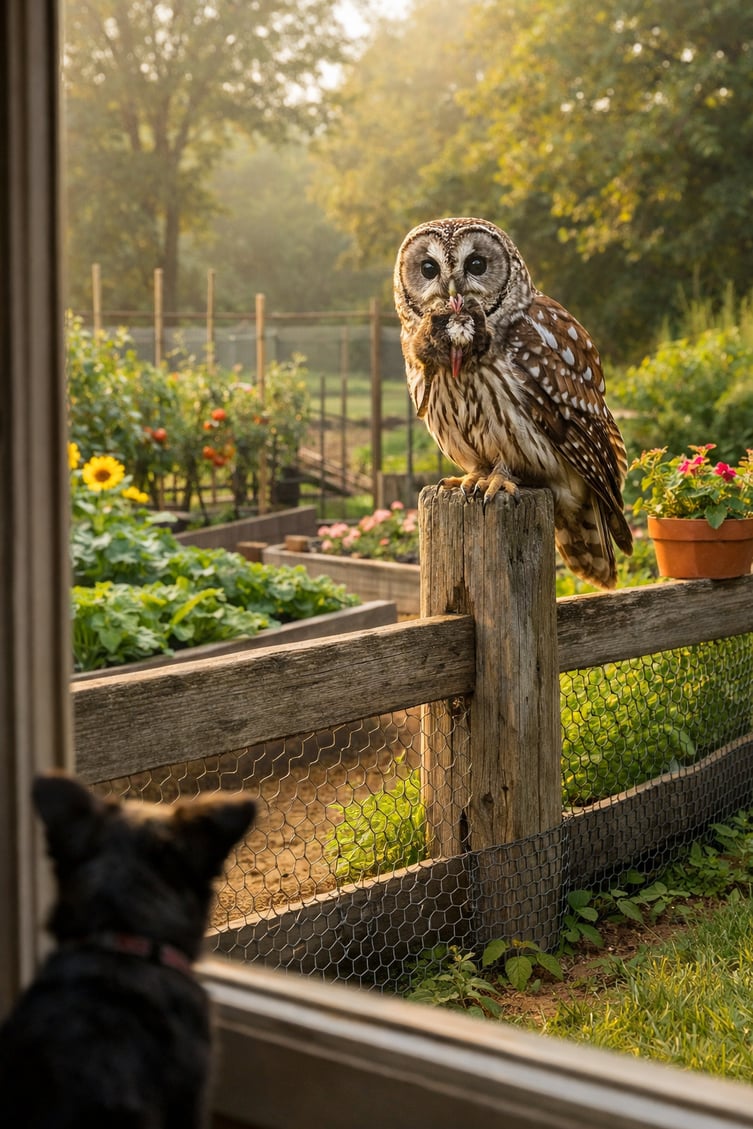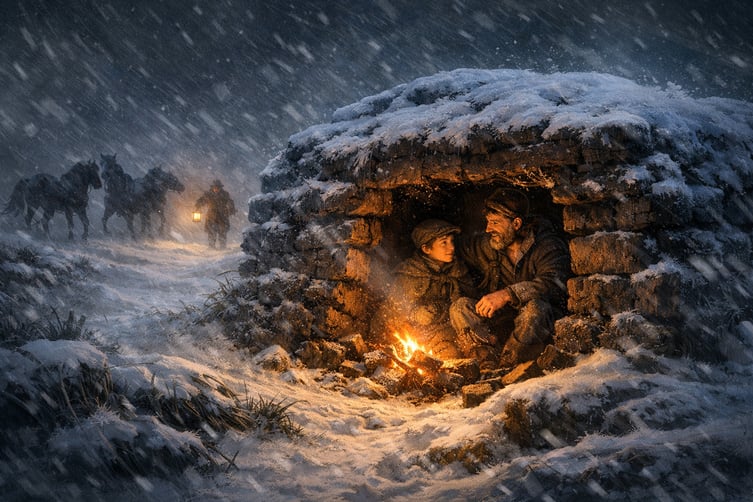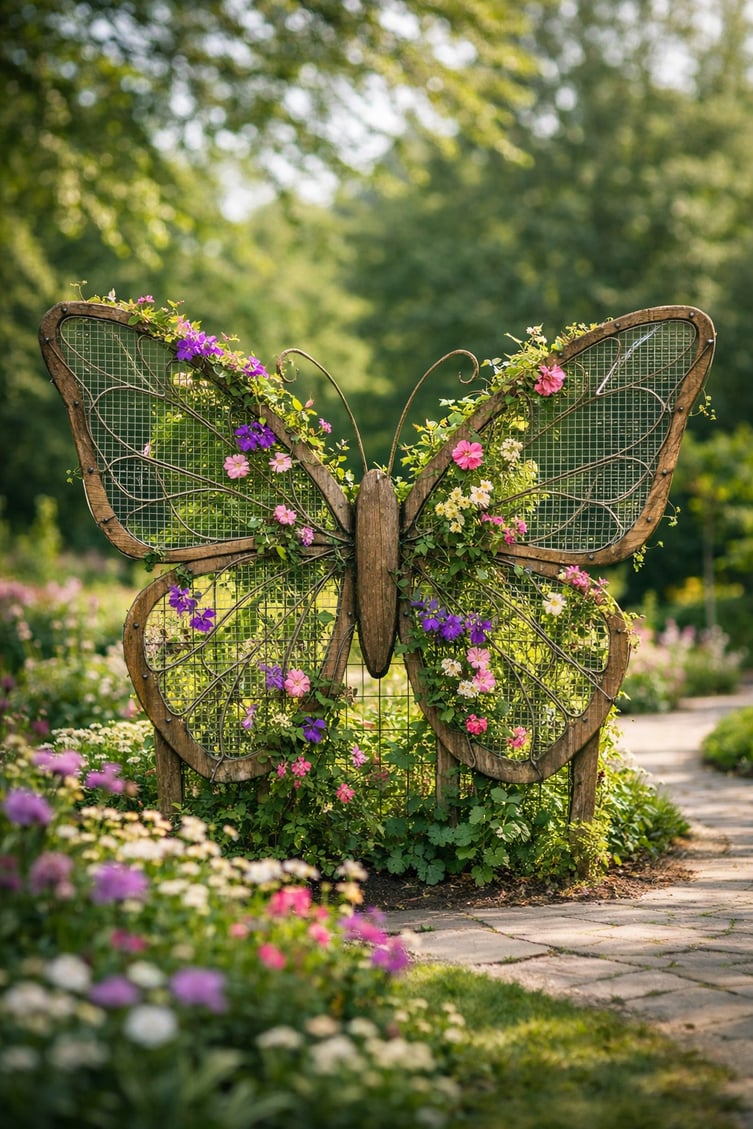🌿 The Garden Solution You Didn’t Know You Needed – 50% Off Today!
This morning, while sipping my coffee at the kitchen window, I witnessed something that left me in awe. Sitting perfectly poised on one of my fence posts in the garden was a barred owl, surveying the world with those piercing eyes. He’d glance down at the garden, then back at me through the window, his head swiveling in that mesmerizing almost 360-degree motion.
And then it happened—with a graceful swoop, he dove down into the garden, emerging moments later with a rodent in his talons. Back on the fence post, he enjoyed his breakfast, all while I stood there, captivated by his beauty and the delicate balance of nature at work. Thank goodness, Phoebe, my little black puppy, who was watching through the French door, has learned how to stay calm even while watching wildlife.
Moments like these remind me how important it is to protect the spaces we care about while allowing nature to thrive. For example, our Sparrow Netting makes a wonderful addition to the bottom of your fencing to help keep smaller creatures out of your garden while preserving its beauty and integrity. Whether you’re protecting crops, vegetables, or flowers, this durable three-quarter-inch hex netting is a versatile solution.
Now is the perfect time to stock up! We’re offering an incredible discount to help decrease our inventory—you can get Sparrow Netting at 50% to 75% off, depending on how many rolls you purchase.
Don’t miss this opportunity to secure a premium product at a fraction of the cost. Give Terry a call at 978-486-3116 for more details and to place your order.
Here’s to balancing protection and nature’s beauty—and to great deals when you need them most!
Kind Regards, Debbie Page
CEO, Louis E. Page Inc—Woman-owned business and Family-owned since 1893. (131 years of continuous service through 2 world wars and 2 pandemics)










